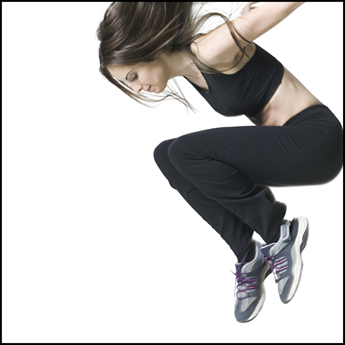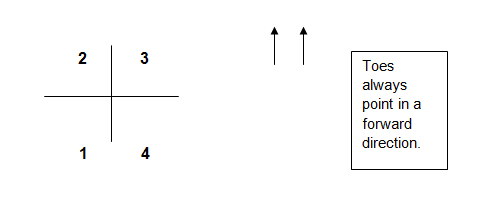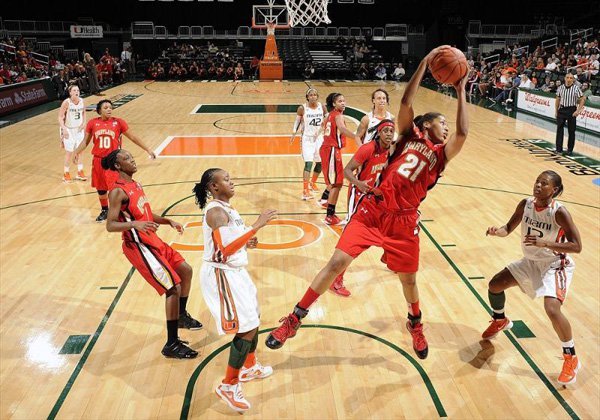
Plyometrics are exercises designed to produce maximum force in a short amount of time. In a word -- power.
Studies have shown that for runners, those that spend the least amount of time in contact with the ground are the fastest. Cyclists also need explosive power to execute a sprint or to maneuver over an obstacle on the mountain bike.
More: A Great Plyometric Exercise to Build Downhill Speed
If you're looking to incorporate plyometrics (plyos) into your routine, it is best to begin with floor work before advancing to box jumps. This allows your body to adapt with small jumps before going to larger jumps. It is also best to error on the conservative side, keeping the number of jumps low—especially if you are a cyclist and not a runner or triathlete.
This column includes a sample floor routine for you to get started on plyos.
Plyos are typically done in the offseason and often done in conjunction with a strength training workout. Plyo workouts need to be done on a good jumping surface. Concrete or other very hard floors should be avoided. Also, a good pair of crosstraining or court shoes should be used for these workouts. Avoid broken down running shoes or yard chore shoes.
More: How to Combine Cycling and Strength Training
Start by warming up with 10 to 20 minutes on a bike or running. If you are doing plyos and weights, begin by doing plyos first, then weights.
When jumping, imagine energy is stored in your legs, like a spring. On the four-square plyos in the sample exercise, concentrate on accuracy first, then speed.
Some gym courts have a cross pattern already painted or striped on the floor that you can use for your plyos. If you don't have access to a court floor, you can construct your own reusable four-square pattern by taping four pieces of athletic tape together, sticky side to sticky side. Of course you can also make a square by simply taping the cross pattern on flat carpeting or a wooden floor.
For counting on the four-square, if the pattern calls for square 1 to 2, a count of "one" is when your feet go from 1 to 2 and return to square 1. Rest between jump sets, until you are fully recovered or around one to three minutes. When doing single leg jumps, alternate between a right leg jump set, then the left leg. In other words, do not do all right leg sets before going to the left leg. Rest two or three minutes after both legs have completed one set before beginning again.
More: 10-Minute Plyometric Workout for Runners
Record the number of jumps completed in the given time on the line provided. For example:
Number 1 to 2, 20 seconds, both legs: 22
Athletes just beginning plyos should do the lower number of sets indicated. An additional option for beginners is to cut the time in half and jump only 10 seconds instead of 20.
If watching a clock is tough, you can time your first set of jumps to get an idea of how many jumps you can achieve in 20 seconds. Let's say that number is 22. Then, rather than aiming for counting the jumps in 20 seconds, use your base number and time how long it takes you to get 22 jumps. As you get faster, add a jump or two to your count and keep track of time on your stopwatch. More jumps in 20 seconds or baseline jumps in less time is the goal.
There is a learning curve. Expect to improve within the first session and another improvement at the next session.
More: 4 Plyometric Exercises to Speed Up Your Muscles

Both legs
1. Number 1 to 2, 20 seconds, 2-4 sets (Record number of jumps)
2. Number 1 to 4, 20 seconds, 2-4 sets (Record number of jumps)
3. Number 1 to 2 to 3 to 4, three times around, 2 sets (Record time)
4. Number 1 to 4 to 3 to 2, three times around, 2 sets (Record time)
Both legs
1. Number 1 to 2, 20 seconds, 1-2 sets (Record number of jumps)
2. Number 1 to 4, 20 seconds, 1-2 sets (Record number of jumps)
3. Number 1 to 3, 20 seconds, 1-2 sets (Be sure to jump diagonally, keeping hips and toes pointed forward.)
4. Number 4 to 2, 20 seconds, 1-2 sets (Be sure to jump diagonally, keeping hips and toes pointed forward.)
Single legs
1. Number 1 to 2, 10 seconds, 2 sets (Record number of jumps with each leg)
2. Number 1 to 4, 10 seconds, 2 sets (Record number of jumps with each leg)
As you progress, you can add jumping over blocks of foam of varied heights or box jumping.
Exercises are from Training Plans for Multisport Athletes, published by VeloPress.
 Ready to ride? Search for a cycling event.
Ready to ride? Search for a cycling event.
Best Basketball Dunk Vines Compilation 2014

Fraser River Salmon fishing OPEN and HOT!


Copyright © www.mycheapnfljerseys.com Outdoor sports All Rights Reserved